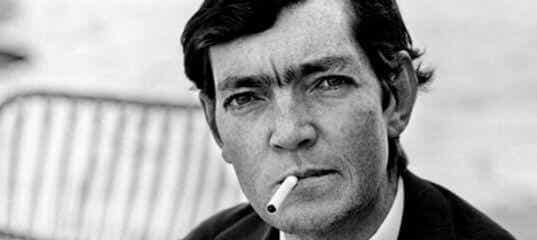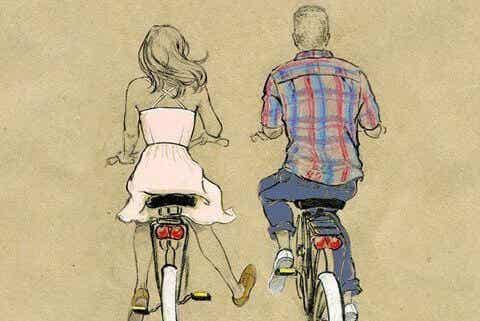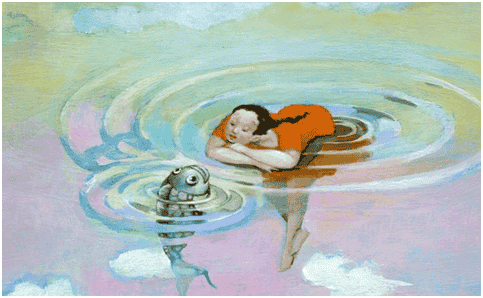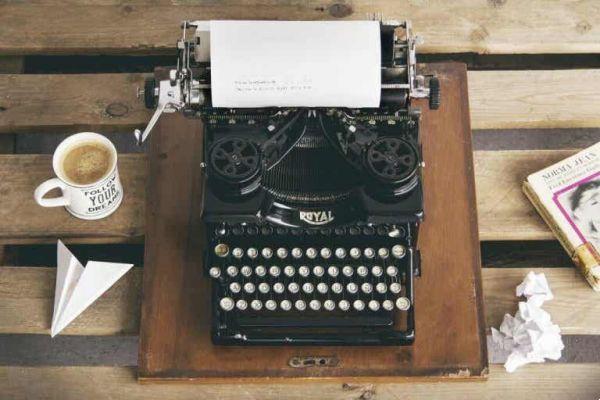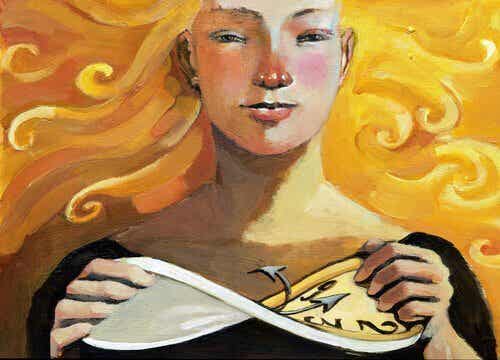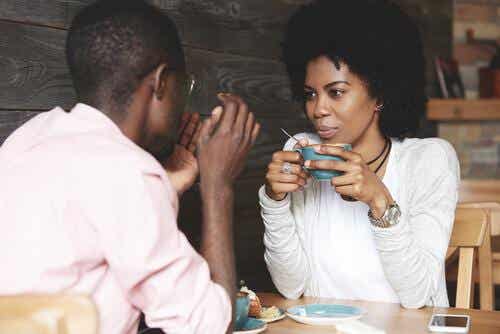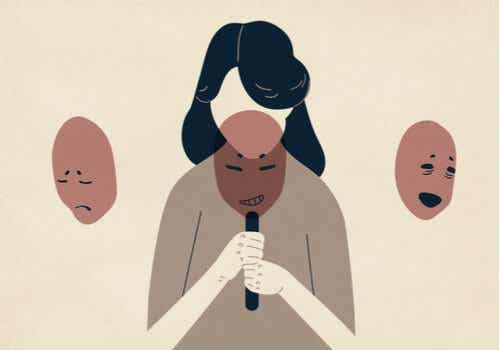
Last update: January 20, 2018
Emotional imagination is a technique to reduce anxiety, that monster that haunts us and prevents us from enjoying the present. It does so to the point that many times, even before getting out of bed, we are overwhelmed by all the commitments to be done in the hours, weeks and months to follow.
We have internalized these worries to such an extent that they become part of us and they slip through our thoughts as they please, when we do not notice their presence in a constant way, as if they were a background for everything we do or a threatening shadow that does not even goes away when the sun goes down.
Ma it is possible to live beyond "I have to do this", “I have to finish this one”, “tomorrow I have to…”, “for sure the boss will give me other tasks as soon as he crosses the threshold”, etc.? Read and find out what emotional imagination is!
"Everyone has the ability to change himself".
-Albert Ellis-
Emotional Imagination - What Is It?
Emotional imagination is a psychological technique that is part of Rational Emotional Behavioral Therapy by Albert Ellis, one of the most recognized psychotherapists of all time. This therapy is based on a cognitive-behavioral approach, the one that has the greatest empirical support among all the psychological currents. In other words, its use has been verified and validated by numerous studies.
Isn't that what we all want when we go to a psychologist? Unfortunately we always hear of acquaintances or we ourselves went to therapy without getting any help. Even if it cannot be generalized and it is not an irrefutable guarantee, going to a cognitive-behavioral therapist can be very effective and helpful.
“We teach people to do themselves good. We cannot change the past, so we try to change how people think, feel and behave today. "
-Albert Ellis-
Why use emotional imagination?
To understand why emotional imagination can be useful to us, we need to understand what the cognitive-behavioral current postulates about emotions. These are our body's responses to changes in the external or internal environment. That is to say that emotions can come from things that happen around us, but also from thoughts that appear in our mind.
In fact, these thoughts are a fundamental part of the matter that concerns us. Emotional imagination tries to give us the tools to modify and manage negative internal speech which often causes negative emotions to be triggered.
Let's give you an example: you are driving quietly on the motorway, and when you are about to overtake a car in the left lane, another one appears behind you at full speed and is glued to you. In this situation, there are people who think “but how can you drive so aggressively? Can't you see that if I have to brake we end up in an accident? But who do you think you are to drive like this? ". How do you think people who create these kinds of thoughts feel? How do you feel when you think this way?
Emotions such as anxiety and anger certainly appear. Logical, right? Then there are other people who may have a different internal dialogue: “Okay, he can stick to me as long as he wants… I'll continue at this speed until I pass the car, it's his problem if he's in a hurry and can't wait”. This time, although some anxiety or anger may appear, the intensity of these emotions will be less, do you see?
How is emotional imagination used?
To use the emotional imagination, the first thing we need to consider is our ability to imagine. If it is very difficult for us, we may first need a series of practice exercises to increase our skills in this regard.
In primo luogo, we have to think about a situation that causes us anxiety. Then, we have to think about every detail of what is “happening” and that causes us discomfort.
We will try to experience other negative emotions, but which are not so disturbing. That is, we need to make negative emotions appear more appropriate and moderate. It is important to note that we cannot change anything about the imagined situation, yes. The change in emotion must take place as an exercise for the person.
Once we have achieved it, we must verbalize the thoughts that have appeared and that have helped us to make our negative emotions become more adaptive. Following the example of the car that is glued behind us, we should try to find the thoughts seen in the second situation.
What are the benefits of emotional imagination?
The imagination is a tool that, if well used and trained, is able to greatly facilitate the regulation of our emotions. The positive aspect of cognitive-behavioral techniques is that they are complementary, so different tools can be used depending on the situation.
In this sense, emotional imagination is an "extra" that helps us in a central aspect - the management of dysfunctional and not very adaptive thoughts - to reduce our discomfort. As you can imagine, even if we understand the importance of learning how to do this, it is often difficult for us to do it during therapy.
“The best years of your life are when you decide that your problems are yours alone. It's not your mother's fault, the ecology's or the president's fault. In this way one realizes the control over one's own destiny "
-Albert Ellis-
THU emotional imagination can help us think more carefully and critically about the worries and fears we have. It also helps us correct past mistakes and trains us in rational skills to prevent them from happening again in the future. But not only that, it also helps us to improve our self-esteem and our confidence, seeing that we are better able to deal with situations that cause us discomfort.
Ultimately, it helps us re-educate ourselves emotionally. However, we must not forget that if you feel great discomfort, the first step to regain control of your life is through a capable psychologist. This professional figure will help us to acquire the appropriate strategies so that we can regain control ... We work to better regulate our anxiety!
Images courtesy of Tanja Heffner, Davide Ragusa and Ian Espinosa.








